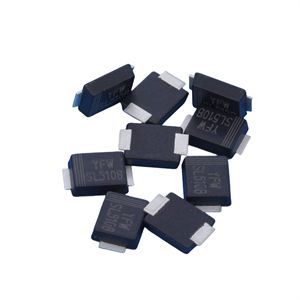Date:2024-11-07 Categories:Product knowledge Hits:388 From:Guangdong Youfeng Microelectronics Co., Ltd
The full name of MOS in English is MOSFET, where the suffix FET stands for Field Effect Transistor. FET is a semiconductor device that uses the electric field effect of the control input circuit to control the output circuit current.
FET is a four terminal device with source (S), gate (G), drain (D), and body (B) terminals. FET controls the current by applying voltage to the gate, thereby changing the conductivity between the drain and source. Due to its reliance on the majority carriers in semiconductors for conduction, it is also known as a unipolar transistor. That is to say, FET uses electrons or holes as charge carriers in its operation, but cannot use both at the same time.
There are two main types of field-effect transistors, namely junction field-effect transistors (JFETs) and insulated gate field-effect transistors (MOSFETs).
The Chinese full name of MOSFET is metal oxide semiconductor field-effect transistor. Due to the isolation of the gate of this field-effect transistor by an insulating layer, it is also called insulated gate field-effect transistor.
MOSFET was invented by Mohamed M. Atalla and Dawon Kahng at Bell Labs in 1959 and first introduced in June 1960. It is a fundamental component of modern electronics and the most commonly used device in history. Since the 1960s, the shrinking and miniaturization of MOSFETs have been driving the rapid development of electronic semiconductor technology and enabling high-density ICs such as storage chips and microprocessors. MOSFETs are considered the "mainstay" of the electronics industry.

Previous: Classification, Structure, and Principle of MOSFET
Next: Using voltage inspection method to quickly locate fault points in integrated circuits